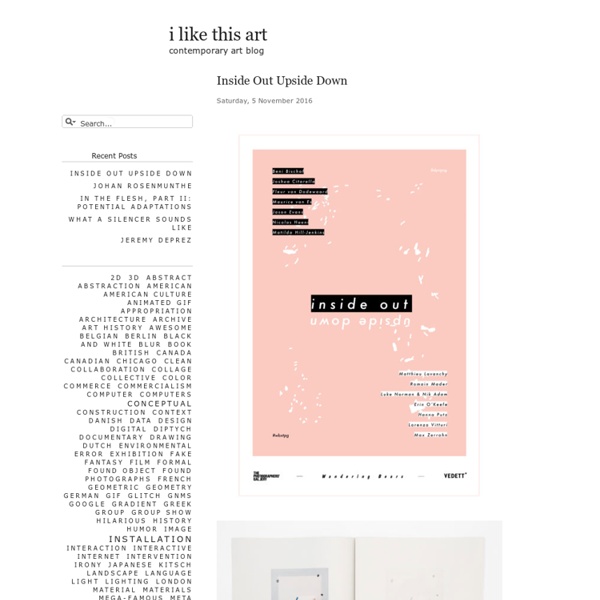I like this art

Home | MOUSSE CONTEMPORARY ART MAGAZINE
pietmondriaan.com
Opera Gallery, art gallery, painting, artwork for sale, sculpture
Elein’s Chronicle
Contemporary Art Daily
Bambou
contemporary art - exhibitions listing and opinion
Le guide des égarés. » culture de l'information, Information literacy, documentation, CDI, , Pédagogie, sciences de l'information et de la communication, Humanisme numérique.Olivier Le Deuff 1999-2012:
Art, Design, Technologie...
Nouveaux supports, nouveaux espaces, nouvelles médiations
Actes des 5e Rencontres Savoirs CDI Nouveaux supports, nouveaux espaces, nouvelles médiations Nous assistons actuellement à une nouvelle évolution des pratiques des jeunes au niveau de l’accès à l’information au niveau des espaces, les réseaux sociaux sont devenus incontournables, générant de nouveaux rapports au savoir, au niveau des supports, le livre, les médias traditionnels évoluent par la numérisation et entraînent de nouveaux modes de lectures, au niveau des outils les smartphones, tablettes, e-books, TBI changent la relation des jeunes à l’information, au document, au travers de nouveaux usages. Quelles sont les caractéristiques de ces nouveaux usages ? Quels changements ces évolutions impliquent-elles dans les pratiques des documentalistes ? Quelles nouvelles médiations, médiatisations et pratiques pédagogiques devons-nous inventer ? Quelles implications sur notre travail au quotidien : veille, médiations, travail collaboratif… ? Lundi 24 octobre Ouverture [voir les vidéos] L'Ipad
theilluminator
Related:
Related:



